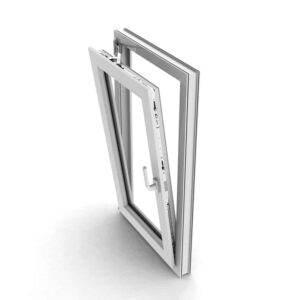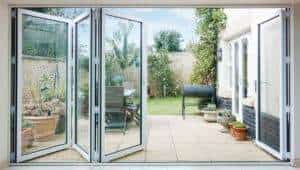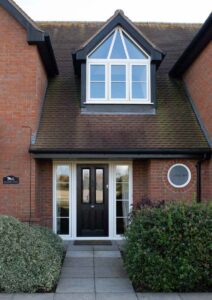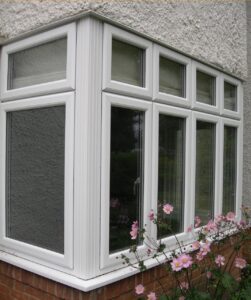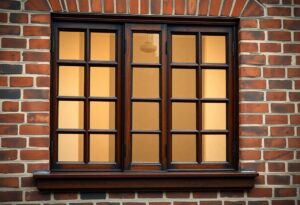Noise pollution can significantly affect your quality of life, leading to stress and sleep disturbances. You can enhance your living environment by investing in innovative acoustic window designs. These advancements are specifically engineered to block out unwanted sounds, creating a more tranquil atmosphere in your home or office. Discover how double glazing, specialised seals, and other design features can offer effective solutions for reducing noise levels. To learn more about enhancing your acoustic comfort, check out The Ultimate Guide: How to Soundproof Windows.

Understanding Noise Pollution
The increase in urbanisation and industrial activities has led to a rise in noise pollution, significantly affecting quality of life. This unwanted sound can stem from diverse sources such as transportation, industrial machinery, and everyday urban life. Noise pollution is characterised by both constant noise, like traffic, and fluctuating noise, such as construction work. With growing concerns surrounding environmental quality and its direct impact on health, addressing noise pollution has become a priority for many communities (consider integrating acoustic designs in your homes).
Definition and Sources of Noise Pollution
Among the definitions of noise pollution, it is often described as excessive or harmful levels of noise that disrupt daily life. Common sources include transportation systems like roads, railways, and airports, alongside industrial activities and the increasing density of urban living. You may encounter constant noise from vehicles or fluctuating noise from construction sites, both of which contribute to the overall soundscape. There is a growing awareness of how these noise levels impact environmental quality, prompting many to make informed decisions about soundproofing and effective sound management (consider installing soundproof windows).
Health Impacts of Noise Pollution
Noise can significantly harm your well-being, leading to various health conditions. Prolonged exposure to unwanted noise may result in high levels of stress, sleep disturbances, and even cardiovascular diseases. It can also contribute to hearing loss, highlighting the urgent need for effective solutions, particularly in residential areas where you spend a majority of your time. These health implications encourage a search for innovative acoustic designs to create quieter living environments.
For instance, those living in areas with chronic noise pollution often experience heightened feelings of anxiety and a decrease in overall mental health. The risk of developing serious health issues such as hypertension and heart disease significantly increases with continuous exposure. Therefore, prioritising noise control measures is crucial for your peace and well-being, enhancing your quality of life and fostering a healthier environment.
The Role of Windows in Noise Mitigation
There’s an undeniable connection between windows and noise pollution control. As the primary barrier between your living space and the outside world, windows play a vital role in how much sound enters your home. The evolution of window technology presents an opportunity to enhance your environment, leveraging acoustic advancements to effectively reduce external noise and create a more peaceful living space.
Traditional Window Limitations
Behind standard designs lies a significant inefficiency in blocking unwanted sound. Most traditional windows use single or double glazing, often constructed from basic materials like standard glass and wooden frames, which fail to adequately attenuate noise. This results in disturbances from outside traffic and urban activities that can easily infiltrate your home. (Upgrading your windows is an important decision for effective noise reduction.)
Importance of Acoustic Windows
Between the limitations of standard windows and the benefits of modern options lies the importance of acoustic windows. These innovative designs offer enhanced sound insulation, making your living environment significantly quieter. They are also more energy efficient, preventing heat loss and potentially increasing your property’s value, which makes them a worthwhile investment for anyone looking to improve their home comfort.
Windows are more than just a means to let light into your home; they can significantly affect your quality of life. Acoustic windows are engineered with multi-layered glass and specialised frames that effectively eliminate outside noise, allowing for a serene atmosphere in your living space. Investing in these advanced designs not only boosts energy efficiency but also raises your property value, making them a smart choice for modern homeowners who prioritise comfort and tranquillity.
Innovative Acoustic Window Designs
If you’re seeking a peaceful home environment, innovative acoustic window designs can significantly reduce external noise. By incorporating cutting-edge technology and materials, these windows effectively block out unwanted sound, providing a serene living space amidst the chaos of urban life. With the right choices, you can enjoy both tranquillity and comfort in your own home.
Materials and Techniques
On your journey to enhanced soundproofing, contemporary acoustic window designs utilise advanced materials and construction techniques such as double or triple glazing, laminated glass, and specialised frame materials that significantly boost sound insulation. Each of these elements works in harmony to create a barrier against noise, ensuring your home remains a sanctuary. (Opting for these materials can make a marked difference in sound reduction.)
Design Considerations for Urban Areas
An effective integration of urban planning and architectural insights is imperative for optimising acoustic window designs. You should consider how these aspects can work together to enhance noise reduction while ensuring your windows remain visually appealing and functional. Thoughtfully designed windows not only block sound but also complement the urban landscape, creating a harmonious balance.
This approach highlights the importance of functionality and aesthetics in urban acoustic window designs. You want to ensure your home enjoys maximal noise reduction without compromising on style. Carefully considered materials, such as those that blend seamlessly with your building’s architecture, can enhance both the look and the performance of your windows, offering a sustainable solution for modern urban living.
Case Studies
Now, let’s probe into some compelling case studies that illustrate the effectiveness of acoustic window designs:
- Project A: A residential complex in London saw a 40% reduction in noise levels following the installation of triple-glazed windows.
- Project B: A commercial office building reported an increase in occupant productivity by 15% due to improved concentration levels after implementing advanced acoustic windows.
- Project C: A school in Manchester achieved a 30% decrease in ambient noise, resulting in higher student satisfaction scores.
For more insights, read How to Soundproof Your Windows (2024).
Successful Implementations
On reviewing successful implementations, you will find notable instances where innovative acoustic window designs have led to significant outcomes, such as a 25% increase in tenant satisfaction in a high-density urban area. One highlighted project in New York installed advanced window technology, resulting in a reduction of external noise by up to 50% over a year. (The integration of soundproofing measures is a vital decision for enhancing urban living.)
Lessons Learned
Between evaluating various case studies, you will uncover valuable lessons about the advantages and pitfalls encountered in acoustic window technology. Best practices highlight the importance of proper installation and ongoing maintenance, which can further optimise performance. (Investing in quality materials is a notable choice that pays off in long-term effects.)
Plus, it’s important to consider the community impact when implementing these solutions. Effective acoustic designs not only improve individual satisfaction but also contribute to a more harmonious urban environment. Engaging with stakeholders early in the planning process can lead to better outcomes and ensure that your choices align with community needs. (Prioritising user feedback is key in developing effective noise reduction strategies.)
Future Trends in Acoustic Window Technology
Not only are acoustic windows evolving, but their future trends hint at remarkable innovations in noise reduction. As technology advances, you can expect to see the emergence of smart windows that adapt their properties based on environmental conditions, enhancing their ability to block noise. These adaptive designs promise to significantly mitigate noise pollution in urban environments, providing a more serene atmosphere for your living spaces. (Your choice in window technology could greatly influence your quality of life.)
Emerging Innovations
Innovations in window technology are paving the way for solutions that actively combat noise pollution. With the rise of smart windows, you can enjoy features that automatically adjust insulation levels or transparency based on external sound levels and environmental factors. This adaptability not only enhances your comfort but also holds potential for substantial reductions in energy consumption by optimising heating and cooling needs. (Critical decisions must be made about the integration of such technologies in modern architecture.)
Regulatory Standards and Recommendations
Trends indicate that regulatory standards will increasingly influence the future of acoustic window designs, prompting a need for updated building codes. You should be aware that these updates are necessary for integrating effective noise reduction strategies into construction policies. By adhering to these evolving standards, builders and manufacturers can help ensure that your home remains a peaceful environment amidst urban noise. (Incorporating new regulations will be vital for achieving superior sound insulation in future buildings.)
Considering the intersection of innovative technology and regulatory standards, you must recognise that prioritising updated codes in construction can dramatically improve your living conditions. As acoustic windows become standardised in building practices, you will benefit from improved noise reduction and overall comfort. Moreover, incorporating these advancements can have significant long-term impacts on your health and well-being. Ultimately, advocating for streamlined policies can help build a quieter, more inviting world for everyone. (Your involvement in these discussions is necessary for fostering a harmonious living environment.)
To wrap up
Hence, by considering innovative acoustic window designs, you can effectively combat noise pollution in your living or working environment. These advancements not only enhance your comfort but also improve overall well-being by creating a more serene atmosphere. Investing in such solutions empowers you to take control of your surroundings, ensuring that unwanted noise becomes a thing of the past. Embrace these innovations and transform your spaces into havens of peace and tranquillity.
FAQ
Q: What is noise pollution and why is it important to address it?
A: Noise pollution refers to excessive or harmful levels of noise in the environment, which can have detrimental effects on human health and well-being. It is vital to address noise pollution as it can lead to disturbances in sleep, increased stress levels, and even cardiovascular issues. Combatting noise pollution helps create a healthier, more peaceful living environment.
Q: How do acoustic windows work to reduce noise pollution?
A: Acoustic windows are designed specifically to minimise outside noise by employing advanced soundproofing materials and technologies. They typically feature multiple layers of glass, specialised interlayers, and tight seals that prevent sound from penetrating, effectively reducing the transmission of noise from the outside world.
Q: What are the key features to look for in innovative acoustic window designs?
A: When considering innovative acoustic windows, look for features such as laminated glass, specific thicknesses that can block varying frequencies of sound, and airtight frames to eliminate air gaps. Additionally, options with sound-absorbing materials in the frames can further enhance performance against noise pollution.
Q: Can acoustic windows help with both external noise and internal sound transmission?
A: Yes, while acoustic windows are primarily designed to combat external noise, they can also help reduce internal sound transmission. By using these windows in conjunction with other soundproofing measures, such as wall insulation and door seals, one can significantly improve acoustic comfort within a space.
Q: Are there any aesthetic options available for acoustic windows?
A: Indeed, many manufacturers offer a range of aesthetic options for acoustic windows without compromising their soundproofing capabilities. Homeowners can choose from various styles, colours, and finishes to match their home’s interior and exterior designs while still benefitting from the noise reduction features.
Q: How do the energy efficiency ratings of acoustic windows compare to traditional windows?
A: Acoustic windows often have comparable or improved energy efficiency ratings compared to traditional windows. The multi-layered design not only blocks noise but also provides better insulation, thereby reducing energy loss. This can lead to lower heating and cooling costs, making them an attractive investment for homeowners.
Q: What are the installation considerations for acoustic windows?
A: Installation of acoustic windows should be performed by professionals to ensure proper fitting and sealing, which is imperative for optimal noise reduction. Considerations include the compatibility of the existing window frame, potential need for structural reinforcement, and the overall design appeal for the residence. It is recommended to consult with a specialist to assess specific requirements prior to installation.

